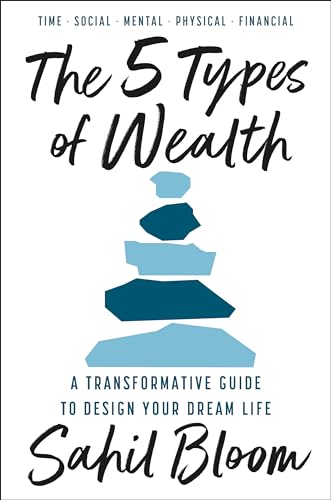Review of Keep Your Day Job by Koby Ofek
by Johny McFliggen, PhD Literature & Business, Oxford
Another week, another dispatch from the front lines of the Great Obsolescence Panic. This time, it arrives not as breathless techno utopianism nor as dour academic prognostication, but in the guise of Koby Ofek’s practical manual for the professionally anxious. One must admit, the timing is impeccable. The question haunting workplaces, from the C suite down to the poor souls wrestling with recalcitrant spreadsheets – “What happens if a robot, or more likely, an algorithm, takes my place?” – has graduated from hypothetical water cooler chat to a palpable, ambient dread. Ofek, commendably, doesn’t waste time on philosophical hand wringing about the singularity or reciting Harari’s greatest hits, though he nods politely in their direction. Instead, this book attempts something far more grounded, perhaps even more necessary: a field guide for navigating the immediate turbulence. I appreciate pragmatism, even if it sometimes lacks the intellectual grandeur of predicting the end of history. The author argues, quite sensibly, that passive waiting is professional suicide, offering instead a toolkit for proactive adaptation within the shifting landscape of one’s own field.
The core of Ofek’s offering lies in a veritable arsenal of frameworks. We have the Trend Decoder Canvas, the Flashback Filter, the Capability Radar, the Human Advantage Matrix, the Task DNA sequencer, the Skill Barbell strategy, AI Shadowing Sprints, Portfolio Paycheck Economics… one almost expects a laminated fold out chart. These tools are designed, clearly, to help the reader diagnose their vulnerability, map their skills against AI capabilities, and plot a course towards resilience. There’s a certain comfort in this structured approach, a sense of control imposed on chaotic change. I can see the appeal for those feeling adrift. Yet, I must pose the question: does this proliferation of matrices and radars risk becoming a sophisticated form of procrastination? Can the messy, often intuitive work of genuine adaptation truly be captured in a five step process or a four quadrant grid? Is there not a danger that meticulously sequencing one’s Task DNA becomes a substitute for the bolder, perhaps less quantifiable, leaps required to stay relevant? It feels less Taleb, more… structured self help for the MBA set. Useful, perhaps, but potentially confining.
Ofek wisely anchors his advice in historical precedent, reminding readers that technological disruption is hardly a novel phenomenon. The Luddites smashing looms, the telephone operators facing automatic switchboards, the bank tellers watching ATMs multiply – these vignettes serve as effective therapy, demonstrating that adaptation, not extinction, has been the historical norm. It’s a welcome corrective to the often ahistorical pronouncements of tech evangelists and doom mongers alike. This grounding in the past lends the book a certain weight. Still, I wonder if the parallels aren’t perhaps a touch too comforting. The speed, the cognitive nature, the sheer scalability of the current AI wave – does it represent a difference in kind, not just degree? Are the lessons of the steam engine or the spreadsheet truly adequate preparation for large language models that learn and evolve exponentially? The historical analogies are soothing, certainly, but one hopes they aren’t merely lullabies sung to quiet the anxieties of a workforce facing a fundamentally unprecedented transformation.
The book champions the cultivation of uniquely human skills – the heavy side of the Skill Barbell, the terrain of the Human Latency Premium. Empathy, judgment, creativity, complex problem solving, ethical reasoning – these are presented as the defensible moats against the algorithmic tide. It’s a sound argument, echoing the sentiments of many thoughtful observers. But I am left pondering the inherent dynamism of that category. What constitutes a “uniquely human” skill seems suspiciously like a moving target. As artificial general intelligence, however distant, continues its march, could today’s strategic moat become tomorrow’s automated commodity? Is the Skill Barbell a durable strategy for the long haul, or a temporary bulwark against the inevitable, a way to feel productive while the ground fundamentally shifts beneath our feet? The book acknowledges AGI briefly, but perhaps doesn’t fully wrestle with its potential to upend even the most carefully constructed human advantage frameworks.
Finally, Ofek extends his pragmatism to the personal sphere, offering sensible advice on diversifying income streams via the Portfolio Paycheck and managing the undeniable psychological toll of this era through mental fitness strategies. Recognizing the anxiety and burnout is commendable; offering concrete coping mechanisms is useful. Yet, I find myself asking whether this intense focus on individual resilience – build your portfolio, manage your stress, adapt your skills – inadvertently sidesteps the larger, systemic questions. Does framing this primarily as a personal challenge let society, corporations, and governments off the hook too easily? The book touches upon the need for broader social safety nets and policy interventions, particularly in the later chapters, but the overwhelming emphasis remains on individual adaptation. Is this sufficient, or does it risk normalizing a future where the burden of navigating technologically induced disruption falls squarely, perhaps unfairly, on the shoulders of the individual worker?
In sum, Koby Ofek has produced a valuable, eminently practical guide for professionals seeking to navigate the immediate impacts of AI. Its frameworks offer structure, its historical context provides perspective, and its focus on actionable steps is a welcome antidote to passive anxiety. It is, as advertised, a grounded, realistic attempt to help readers secure their footing. I find it generally favorable, a useful tool in the current climate. But the deeper questions linger – about the limits of frameworks, the true applicability of history, the shifting sands of human advantage, and the crucial balance between individual adaptation and collective responsibility. Ofek provides a map for the current terrain, but the thoughtful reader will continue to scan the horizon, wondering about the lands – or perhaps the oceans – that lie beyond its borders. A worthy read, certainly. Just don’t mistake the toolkit for the territory.
Purchase Link: Keep Your Day Job on Amazon


